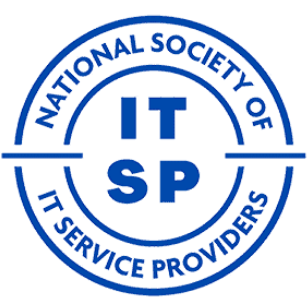 In the digital age, most companies focus on safeguarding their networks, endpoints, and cloud infrastructure. But amid firewalls, antivirus software, and encrypted servers, one critical device is often overlooked: the office printer. Yes, that humble, often-overused machine quietly humming in the corner could be your company’s biggest security threat.
In the digital age, most companies focus on safeguarding their networks, endpoints, and cloud infrastructure. But amid firewalls, antivirus software, and encrypted servers, one critical device is often overlooked: the office printer. Yes, that humble, often-overused machine quietly humming in the corner could be your company’s biggest security threat.
The Rise of Cyber Threats in Unexpected Places
Cybersecurity isn't just about protecting high-profile endpoints anymore. Hackers have become more sophisticated, targeting overlooked vulnerabilities to gain access to sensitive information. Printers, which are often left unmonitored and under-secured, have emerged as a surprisingly common entry point for attackers.
According to a Quocirca report, over 60% of businesses experienced data loss due to unsecured printing. That statistic should raise alarms, especially considering how integral printing still is for day-to-day operations in many organizations.
So, what makes printers such a security risk?
How Printers Became an Easy Target
- They Are Networked Devices
Modern printers are not standalone machines. They are connected to your network, sometimes even to the internet. These devices store IP addresses, access credentials, and even copies of printed documents. This makes them just as vulnerable as any computer or server.
Unfortunately, many organizations fail to apply the same security protocols to printers that they do to other devices. This opens the door to:
- Remote attacks
- Man-in-the-middle interceptions
- Data theft through unsecured access ports
- They Store Sensitive Data
Many printers have internal storage that retains copies of documents temporarily or even permanently. That means contracts, HR records, financial reports, and customer data may be stored without proper encryption.
If a hacker gains access to the device, they could extract previously printed documents and gain insight into confidential information.
- They’re Often Left Unattended
Unlike computers, which usually require login credentials and are monitored for suspicious behavior, printers are typically shared resources in communal areas. Documents left in output trays can be picked up by unauthorized staff or visitors.
Even more concerning, some printers don't require authentication to print, scan, or fax. Anyone with physical or network access could misuse the device.
- Firmware Vulnerabilities
Printers run on firmware that, like any software, requires regular updates to patch vulnerabilities. However, in many organizations, printer firmware updates are either neglected or not performed at all.
Outdated firmware can be exploited to install malware, create backdoors, or disrupt printer functionality as part of a broader attack.
Real-World Examples of Printer-Related Breaches
To better understand the seriousness of this issue, let’s look at a few real-world incidents:
- University Printer Hack (2016): A hacker infiltrated over 29,000 networked printers at universities across the U.S., printing out rogue messages and demonstrating how easily unsecured printers can be exploited.
- Government Office Breach: In several cases, government agencies have reported breaches where attackers accessed confidential data through unsecured multifunction printers (MFPs), leading to both financial loss and reputational damage.
- Corporate Espionage: Some businesses have reported internal breaches where disgruntled employees used unsecured printers to collect sensitive information and send it outside the company.
These examples highlight that the threat isn’t hypothetical—it’s real, growing, and urgent.
Signs Your Printer Might Be a Security Risk
Here are some red flags that indicate your printer could be a threat to your office security:
- No authentication required to access the printer
- Old or unpatched firmware
- Unencrypted print jobs
- Open network ports or unsecured Wi-Fi printing
- No access logs or monitoring system
- Documents left unattended in output trays
- Remote access enabled without restrictions
If any of these issues sound familiar, it’s time to take printer security seriously.
How to Secure Your Office Printers
The good news? Printer vulnerabilities can be fixed with a proactive strategy. Here’s how to start:
- Implement Access Controls
Restrict who can use the printer and what features they can access. Use user authentication, PIN codes, or ID cards to ensure only authorized personnel can print, copy, or scan documents.
- Update Firmware Regularly
Keep all printer firmware up to date. Set a schedule for checking and installing updates provided by the manufacturer, just like you would with any other IT system.
- Encrypt Print Jobs
Use secure print features that encrypt data in transit and at rest. This ensures that documents can’t be intercepted on the network or retrieved from storage.
- Monitor and Audit Activity
Deploy tools that log all printer activity. Monitoring who is printing what, and when, can help detect anomalies and reduce abuse or data leakage.
- Physically Secure the Printer
Place printers in secure, access-controlled environments. Don’t leave them in open lobbies or common areas without oversight. Encourage employees to collect printouts immediately.
- Disable Unused Features
Turn off unnecessary protocols like FTP, Telnet, or SNMP if you’re not using them. The fewer access points available, the less opportunity for exploitation.
- Use Managed Print Services (MPS)
Partner with a vendor that offers managed print services to oversee printer security, maintenance, and compliance. MPS providers often offer features like automatic firmware updates, secure print release, and usage reporting.
Printer Security and Compliance
Many industries face strict compliance regulations, such as HIPAA, GDPR, and ISO 27001. An unsecured printer can easily lead to non-compliance, which in turn could trigger hefty fines or legal action.
For example:
- A healthcare organization that allows unauthorized access to patient printouts could face HIPAA violations.
- A financial institution failing to encrypt customer data in print jobs could be at risk under PCI DSS or GDPR.
Including printers in your overall IT risk assessment is essential to meeting compliance requirements and protecting your organization’s reputation.
Future-Proofing: Printers in the Zero Trust Era
As businesses move towards zero trust architecture, where no device is inherently trusted, even inside the network, printers must be included in the security equation.
Key principles of securing printers in a zero-trust environment include:
- Continuous verification of users and devices
- Least-privilege access
- Micro-segmentation of the network
- Real-time monitoring and threat detection
Future-ready organizations are integrating printers into their endpoint protection platforms (EPPs) and security information and event management (SIEM) systems to detect threats quickly.
Final Thoughts
So, is your printer the biggest security threat in your office?
It might be—especially if it's connected to your network, storing sensitive data, and operating without proper security protocols.
While printers may seem like benign office fixtures, the truth is they can be a gateway for data breaches, compliance violations, and operational disruption if left unsecured. By recognizing the risks and implementing a structured security strategy, businesses can turn their printers from weak points into well-defended assets.
Don’t let your printer be the security hole no one saw coming. Take action now—before a hacker prints their access pass to your business.
Ready to Secure Your Office Printers?
If you're unsure about your current printer security posture, it's time for a print security audit. Whether you're a small business or a large enterprise, protecting your printers is just as important as protecting your servers.
Need help getting started? Start with a FREE Network Assessment to identify vulnerabilities and safeguard your data against cyberthreats.






